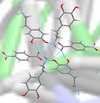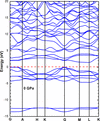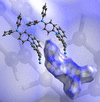issue contents
October 2023 issue

Cover illustration: In four new dopamine salts, the dopamine cation adopts an extended conformation. Intermolecular interaction motifs that are common in the salt forms of tyramine can be found in related dopamine structures, but hydrogen bonding in the dopamine structures appear to be more variable and less predictable than for tyramine. See Kennedy, Cruickshank, Maher & McKinnon [Acta Cryst. (2023), C79, 386–394].
research papers


 access
access

 access
access








 journal menu
journal menu
























